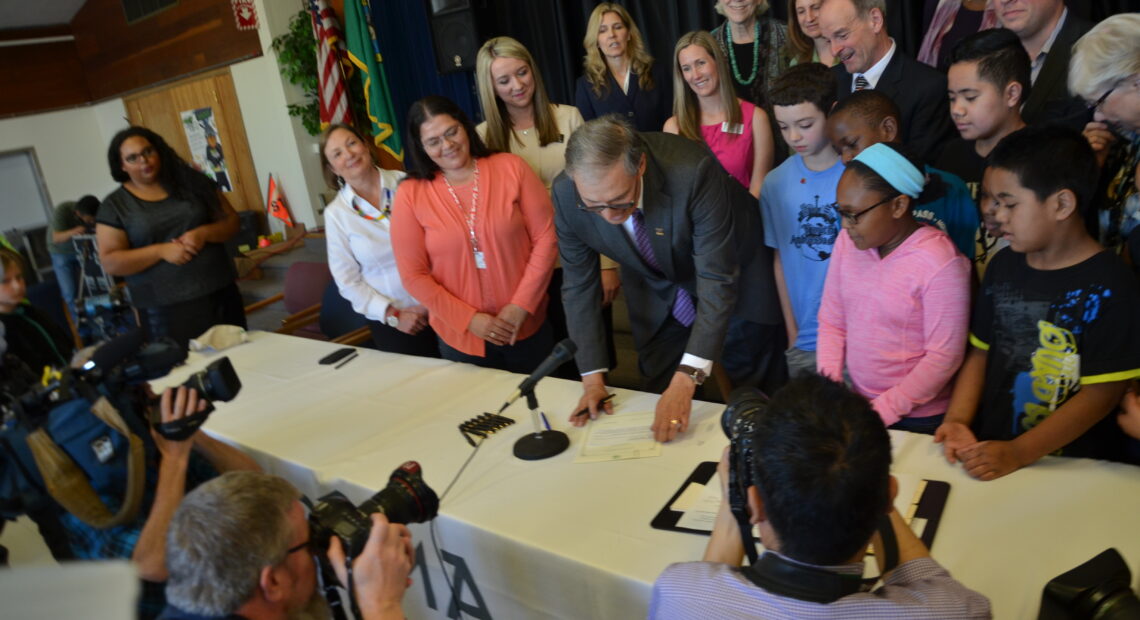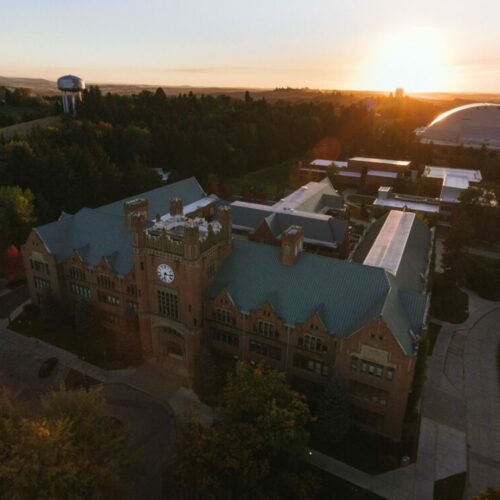
Tacoma schools seek housing resources as district with most homeless students
Listen
(Runtime 1:37)
Read
The Tacoma School District has the largest number of students experiencing homelessness in Washington. Month after month, more students and their families are counted as homeless in Tacoma, the third largest city in the state.
“We started the fall at 1,626, and as of the end of April, we’re at 2,382,” said Taj Jensen, director of Title, Learning Assistance Programs (LAP) and the McKinney-Vento foster care programs with the Tacoma School District.
Of those 2,382 students, 409 are considered unaccompanied youth, meaning children not in the physical custody of a guardian, Jensen said.
The district, with a focus on the whole child, has expanded its work beyond the classroom to try and help families on the precipice of, or already in, a housing crisis.
Pandemic-era federal relief funding has helped with that. The district was one of 17 to receive the Homeless Student Stability Education Program (HSSeP) Grant from the Washington State Office of Superintendent of Public Instruction in 2022. The grant was meant to increase districts’ ability to identify and support homeless students.
Using funds from that grant, the American Rescue Plan Act and Title I the district now employs the only school district-based housing navigator in the state, whose sole job is to help connect families with housing resources.
“My job is to find that needle in the haystack, to find the resource that no one’s yet discovered,” said Michelle Birge, who prior to becoming the housing navigator for the district, was an educator for 20 years and once worked with at-risk foster youth with the Pierce County Alliance.
Birge navigates changing community and school resources. This year, of the 72 families the district has worked with to provide rapid rehousing, the district has been able to house 42. Most of those were housed through a Tacoma Schools Housing Assistance Program (TSHAP) funded by the Tacoma Housing Authority through the Pierce County Coordinated Entry Systems. But that program ended in December.
She isn’t sure why the contract for that program ended, Birge said, but she believes it has something to do with the Tacoma Housing Authority feeling the program didn’t serve as many families in the first year as they would have liked to.
That contract differs because it was the only resource to connect what Birge calls “doubled-up families” with housing. Those are families who are living in another family’s residence, so they technically don’t meet the federal definition of homeless, making it hard for them to qualify for services. Doubled-up families make up about 70% of the population the district serves through McKinney-Vento.
Because the contract has expired, Birge is now focusing on helping these families get into a priority pool for coordinated entry into rapid rehousing or move-in cost assistance.
“There have been lots of families that we still have not been able to house yet, because with the program going away, right now, our families sit in what we call the priority pool,” Birge said.
The priority pool houses families based on a variety of factors that determine priority. Placement on that list expires after 90 days, and families have to reinitiate service requests.
“That list is constantly evolving every single day,” Birge said. “So a family could sit in that pool for 90 days and then be exited out, and they would never know that they’re exited out unless I remind them.”
Now, another COVID-era source of relief is going away. The rental assistance programs that kept many families afloat and housed during the pandemic are ending in Pierce County on June 30. With that, those who work in housing assistance anticipate a peak in families experiencing crises, such as eviction and mounting debt from back-due rent coming due.
Birge is not only preparing for the wave of additional families that might need support this summer, but she’s constantly on the look for new and better resources to curb the tide on this. The district doesn’t know how many families might be impacted.
Housing Connector is an online search tool built and maintained by the real-estate company Zillow to connect landlords to tenants for affordable housing. Birge is trying to secure this tool for the district as a pilot project for five families come September. She said the tool could help her assist those doubled-up families searching for housing.
Ultimately, the problem comes back to a lack of affordable homes. The district isn’t in the real estate or housing development business and doesn’t plan to be, said Jensen of the Title, LAP and McKinney-Vento programs.
“We aren’t in the housing game, we’re in the education game,” Jensen said. “And so the essence of our work is to remove barriers so students have access to public education, and one of those barriers is trying to get our students or families housed.”
It used to be the case that families could find places to rent for $1,600 in the city and squeak by on other expenses, as housing took up most of their income, Jensen said.
“That’s not the case anymore in Tacoma and a lot of urban places around the Puget Sound area,” Jensen said.
The families that the district is serving are highly impacted. Of the 72 families that have been served by the office this year, 69 are at or below 50% of the Area Median Income (AMI.) The majority, 36, are between 10 and 30% of the AMI. Twenty-eight families or 39% are underneath 10% of the AMI.
There’s more affordable housing on the way for Tacomans. Affordable housing organization Mercy Housing plans to break ground in 2024 for 129 subsidized units for low-income families.
“I think those types of things are key for us to lower our numbers,” Birge said, “although I don’t see them lowering, unfortunately.”
The numbers of those needing housing don’t match with resources available in the greater area. The Tacoma Housing Authority recently opened up its housing for all household sizes for the first time since 2015. In the spring, 15,494 households that represented 36,222 people applied for 1,825 spots. In the Tacoma School District there are 409 children without guardians. There are 12 beds for 12- to 17-year-olds in Pierce County.
More from NWPB’s coverage of homeless students in the Northwest:
Two districts, the same dilemma: Not enough shelter spaces
Idaho’s homeless student population increasing amid housing crisis
















